You’re not alone out there.
While you’re flipping burgers, watering plants, or just soaking up the sun—something is watching. With sharp eyes. From the shadows. Maybe from a tree branch, a garden shed, or even right beneath your deck.
Summer invites more than just friends and mosquitoes into your yard. It turns your backyard into a secret theater of wild animal activity—an overnight campground for raccoons, a scouting zone for coyotes, a snack bar for foxes, opossums, and creatures you didn’t even know lived nearby.
Some are harmless. Some are not.
And some are just plain weird.
So before you assume it’s just the neighbor’s cat rustling in the bushes—think again. These unexpected backyard visitors are sneaky, smart, and often watching when you least expect it. Keep your pets close, your trash bins sealed, and your eyes peeled.
Let’s meet the wild guests already making themselves at home—right under your nose.
The Red Fox
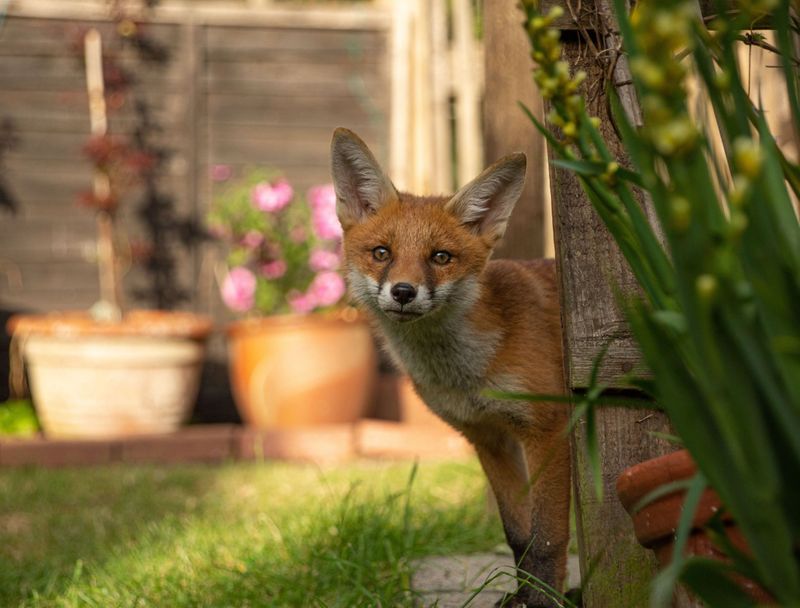
With its bushy tail and clever eyes, the red fox is a master of stealth. Often seen at dawn or dusk, these creatures tiptoe through suburban areas, searching for food. Their adaptability allows them to thrive in various environments, from rural fields to urban backyards.
Foxes are known for their cunning nature and keen senses, particularly their excellent sense of hearing. This enables them to detect prey hidden under layers of snow or soil. Surprisingly, they are also skilled climbers, often taking to the trees to escape predators or to get a better view of their surroundings.
The Eastern Screech Owl

As night falls, the haunting call of the Eastern screech owl can be heard. Small but mighty, these owls are nocturnal hunters, swooping silently through the air. Their mottled feathers provide perfect camouflage against tree bark, making them nearly invisible during the day.
Despite their small size, Eastern screech owls have a varied diet, including insects, small mammals, and even other birds. Their unique ability to rotate their heads 270 degrees allows them to spot prey with ease. A true testament to nature’s adaptability, these owls often make their homes in human-made structures like nest boxes.
The Grey Squirrel

Chattering and scampering, the grey squirrel is a common sight in many backyards. These agile rodents are known for their acrobatic antics, leaping from branch to branch with incredible agility. With a diet that includes nuts, fruits, and seeds, they play a vital role in forest regeneration by inadvertently planting seeds.
Squirrels are equipped with sharp claws and keen senses, making them excellent foragers. Their bushy tails not only provide balance but also serve as blankets during colder months. Inquisitive and bold, they often venture close to homes, sometimes raiding bird feeders for an easy meal.
The Raccoon
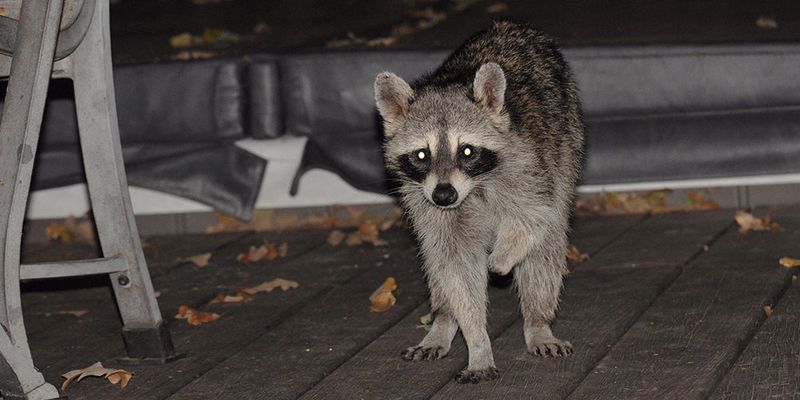
The raccoon, with its distinctive mask and ringed tail, is a nighttime marauder. Known for their intelligence and dexterous paws, raccoons are adept at opening containers and finding food in urban environments. They often forage in backyards, drawn by the scent of garbage or pet food.
Social creatures by nature, raccoons sometimes form small family groups. They communicate using a variety of vocalizations, from purrs to growls. Despite their reputation as nuisances, raccoons play an essential role in ecosystems, controlling insect populations and cleaning up carrion.
The Skunk
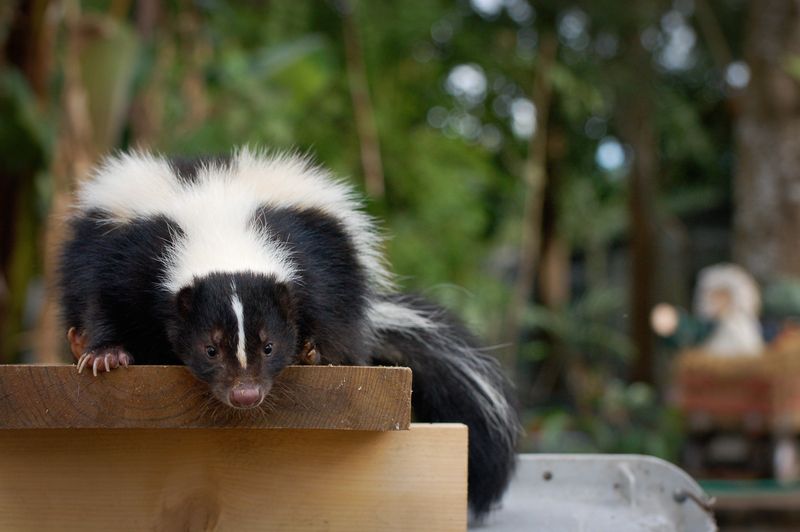
With its bold black and white stripes, the skunk is unmistakable but often unseen. These solitary creatures are mainly nocturnal, searching for insects, small mammals, and plants. Their infamous defense mechanism, a pungent spray, deters potential threats.
Skunks have a varied diet that helps maintain the balance of local ecosystems. They play a crucial role in controlling insect populations. Although they are generally shy and avoid confrontation, they are also curious and may investigate human habitats if food is present. Skunks use their keen sense of smell to navigate their environment.
The Chipmunk
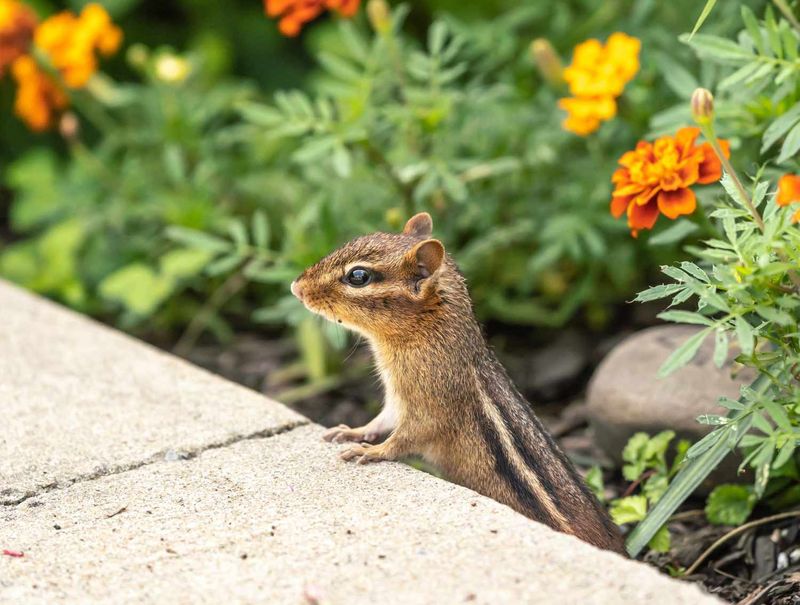
Darting about with boundless energy, chipmunks are small but spirited members of the rodent family. Their stripes make them easy to identify as they scurry through leaves in search of food. Chipmunks store food in their cheek pouches, preparing for the winter months.
These creatures are primarily ground-dwellers, constructing intricate burrows with multiple entrances. Despite their small size, chipmunks are vital to the ecosystem, aiding in seed dispersal and soil aeration. Their lively antics provide endless entertainment for backyard observers.
The Garden Snake
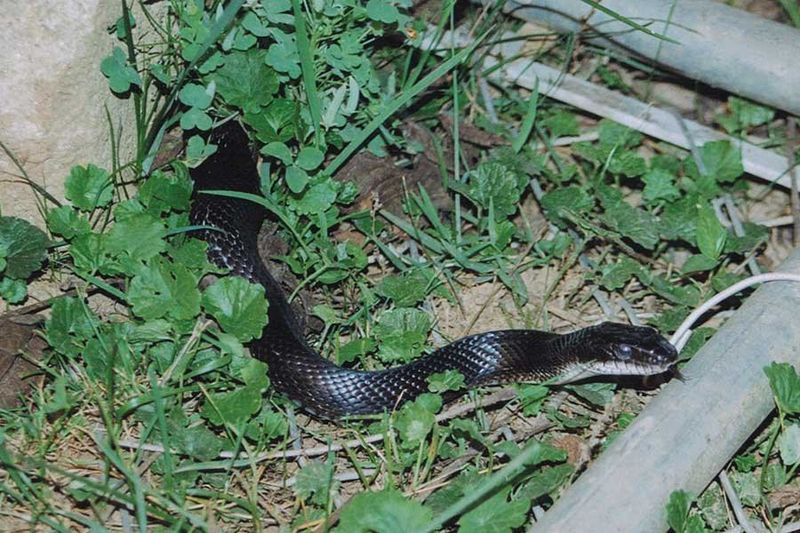
Garden snakes, often called garter snakes, are harmless reptiles frequently found in backyards. These slender creatures are beneficial, preying on pests like slugs and insects. Their presence indicates a healthy ecosystem rich in biodiversity.
Snakes have an acute sense of smell and rely heavily on their tongues to detect their surroundings. Their flexible jaws allow them to consume prey larger than their heads. While they may startle some, garden snakes are generally shy and non-aggressive, preferring to retreat when encountered.
The Hummingbird

With wings beating at incredible speeds, hummingbirds are a marvel of nature. These tiny birds, often seen flitting from flower to flower, are crucial pollinators. Their vibrant plumage and agile flight make them a delightful sight in any garden.
Hummingbirds have a high metabolism, requiring frequent meals of nectar and insects. Their long bills are perfectly adapted for reaching deep into flowers. Despite their small size, they are fiercely territorial, often chasing away larger birds that encroach on their feeding grounds.
The Cottontail Rabbit

Cottontail rabbits, with their soft fur and twitching noses, are gentle grazers. Often seen at dawn or dusk, these rabbits feed on grass and garden plants, sometimes to the dismay of gardeners. Their keen senses help them detect predators, allowing them to escape quickly.
Rabbits have large families, often producing several litters a year. This reproductive strategy ensures their population remains stable despite predation. Their presence in backyards can be both charming and challenging, as they nibble on carefully tended plants.
The Possum

Possums, often misunderstood, are gentle scavengers with an essential ecological role. They consume a wide variety of foods, including insects, fruits, and carrion, helping to clean the environment. At night, they roam suburban areas in search of meals.
Possums have a unique defense mechanism known as “playing dead” to evade predators. Their prehensile tails assist in climbing, giving them access to food sources others might miss. Despite their unsettling appearance, possums are beneficial allies in maintaining a balanced ecosystem.

